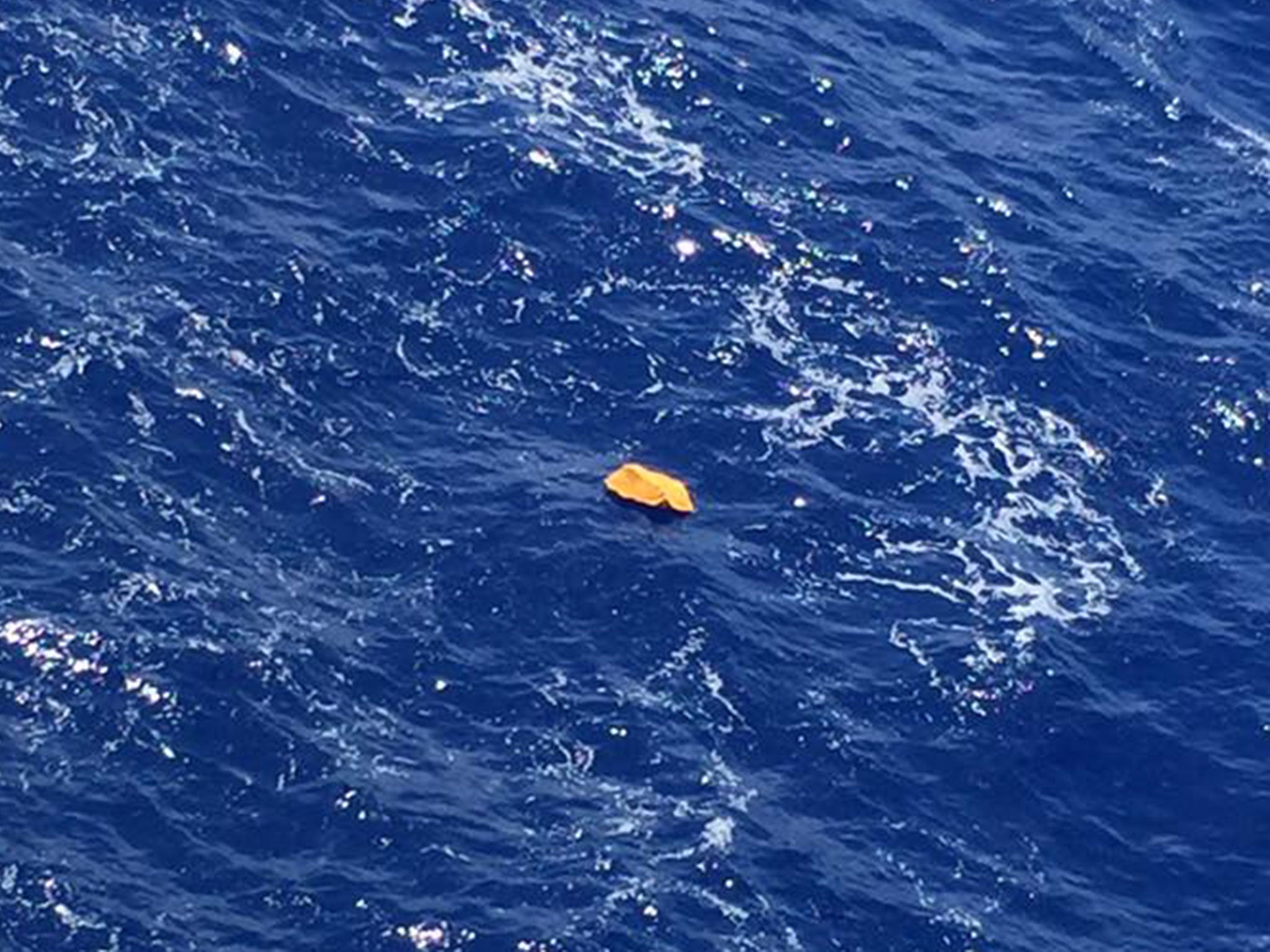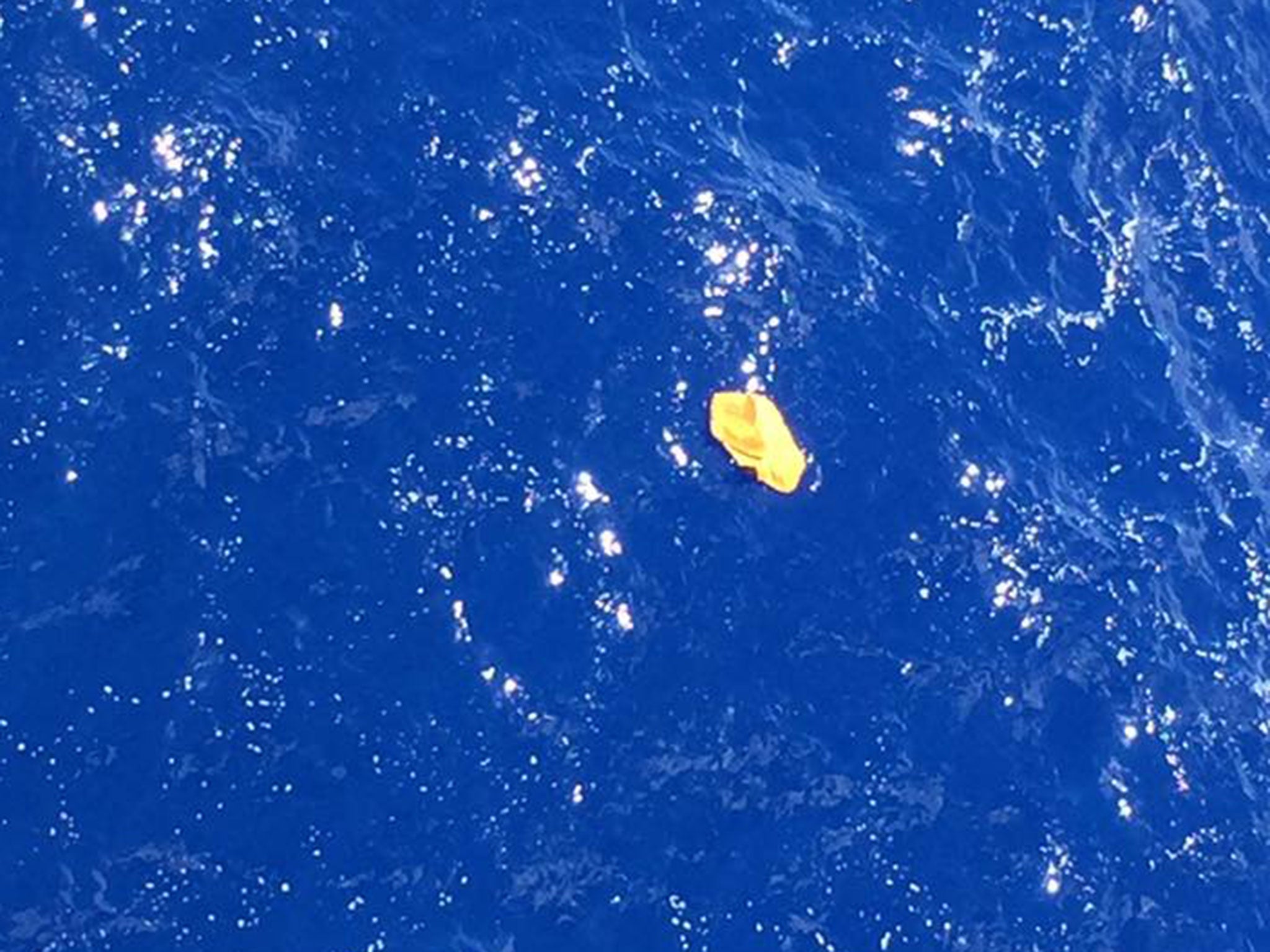EgyptAir flight MS804 crash: Possible debris from missing plane found floating in Mediterranean Sea south of Crete
There was no immediate confirmation that the items found were from the plane

Your support helps us to tell the story
From reproductive rights to climate change to Big Tech, The Independent is on the ground when the story is developing. Whether it's investigating the financials of Elon Musk's pro-Trump PAC or producing our latest documentary, 'The A Word', which shines a light on the American women fighting for reproductive rights, we know how important it is to parse out the facts from the messaging.
At such a critical moment in US history, we need reporters on the ground. Your donation allows us to keep sending journalists to speak to both sides of the story.
The Independent is trusted by Americans across the entire political spectrum. And unlike many other quality news outlets, we choose not to lock Americans out of our reporting and analysis with paywalls. We believe quality journalism should be available to everyone, paid for by those who can afford it.
Your support makes all the difference.Debris believed to be from the missing EgyptAir plane has been found floating in the Mediterranean Sea.
A Greek frigate taking part in searches discovered two objects around 230 miles south of the island of Crete on Thursday, Greek defence sources said.
The objects appeared to be pieces of plastic in white and red, Reuters reported, and were spotted where a transponder signal was emitted in the aftermath of the crash.
It was unclear if they were the same two items seen by an Egyptian search plane.
Greek military officials said two “orange-coloured” objects were located in the same area, which was beneath Egyptian airspace.
“There have been finds south-east of Crete, inside the Cairo flight information area,” Greek army general staff spokesperson Vassilis Beletsiotis told the AFP news agency.
The captain of a Maersk container ship posted photos of items his vessel found on his Facebook page.

Tarek Wahba, from Alexandria in Egypt, previously said his ship, the Sofia Express, was involved in the search.
“We found it - lifejacket and a seat from the airplane,” he wrote in a post.
Separate footage appeared to show possible debris floating. One was orange and the other was white with several colours.
There was no confirmation that the objects were from the plane and analysts pointed out that debris and life vests had become common in the region during the refugee crisis.
Egypt, Greece and France have sent military planes, helicopters and ships to the area, while civilian vessels have also joined the effort.
Britain was among the other nations offering assistance in operations.
All 66 people on board, including a child and two babies, are feared dead.
EgyptAir said there were 15 French passengers, 30 Egyptians, one Briton, two Iraqis, one Kuwaiti, one Saudi, one Sudanese, one Chadian, one Portuguese, one Belgian, one Algerian and one Canadian.
There was no immediate indication of a cause for the crash but Greek air traffic controllers said the pilot did not respond to contact in the minutes before the plane disappeared.
The Greek defence minister said the aircraft had been at cruising altitude when it started rapidly losing altitude over the Mediterranean Sea shortly after entering Egyptian airspace.
“It turned 90 degrees left and then a 360 degree turn toward the right, dropping from 38,000 to 15,000 feet and then it was lost at about 10,000 feet,” Panos Kammenos said.
Egypt's civil aviation minister said he believes the crash was more likely to have been caused by a terror attack than technical problems.
“Let’s not try to jump to the side that is trying to identify this as a technical failure – on the contrary,” Sherif Fathy told a news conference.
“If you analyse the situation properly, the possibility of having a terror attack is higher than the possibility of having a technical (failure).”
He did not provide any further information and added that he did not want to draw conclusions.
Join our commenting forum
Join thought-provoking conversations, follow other Independent readers and see their replies
Comments